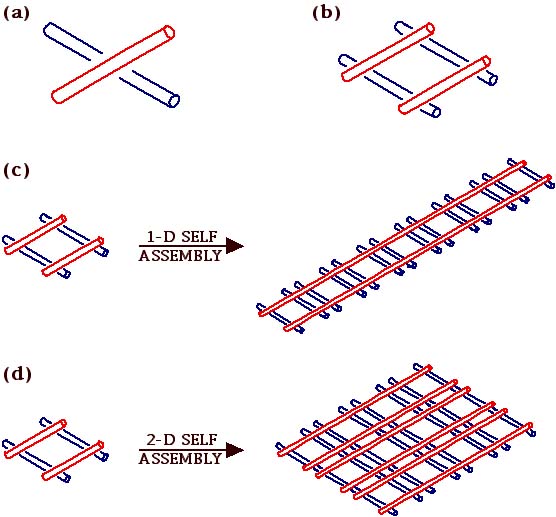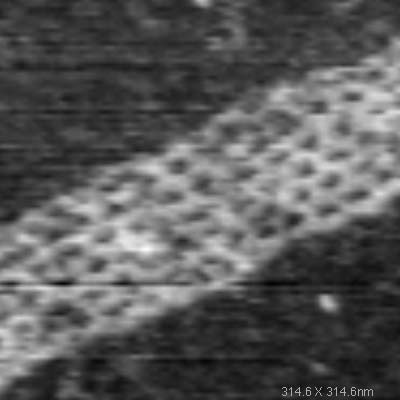

Although this structure is known to be somewhat floppy, it is possible to make a useful tile for one and two dimensional arrays by taking four such junctions and making a parallelogram from them, as shown in (b) above. It is possible to use these tiles to make 1D arrays, as shown in (c), or 2D arrays, as shown in (d). It is possible to change the dimensions of the parallelograms and their overhangs, so that a series of tunable cavities can be produced from this motif. A sample AFM picture is shown below

In addition to making 1-D and 2-D arrays from conventional Holliday junctions, it is also possible to make them from Bowtie junctions.
Return to Two Dimensional Arrays
Return to Ned Seeman's Nanotechnology Page
Return to Homepage for Ned Seeman's Lab